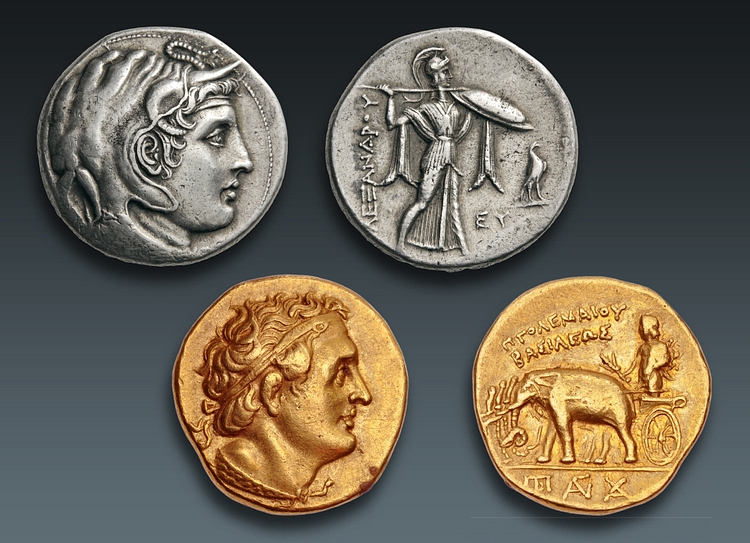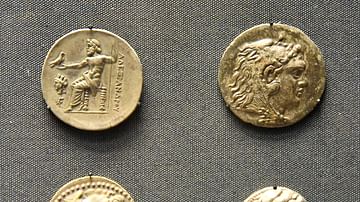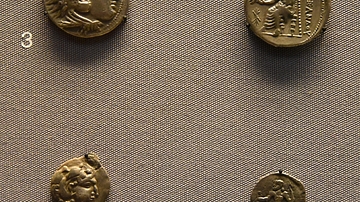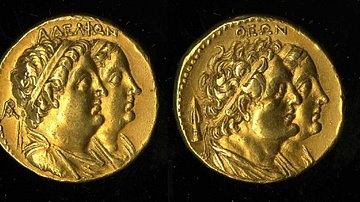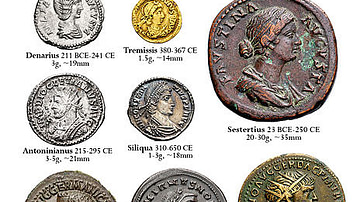Server Costs Fundraiser 2024
Illustration
Two coins issued by Ptolemy I:
1) A portrait of the deified Alexander the Great wearing an elephant scalp on his head, with a ram’s horn over his temple, and an aegis (sacred fleece) over his shoulder; on the reverse Athena Alcidemus, the patroness of Pella
Silver tetradrachm, Alexandria, c. 312/1-305 BCE; Nomos no. 12, lot 120.
2) A portrait of Ptolemy with diadēma (royal headband) and aegis; on the reverse a deified Alexander holding a thunderbolt and scepter standing in a chariot drawn by four elephants
Gold stater, Cyrene or Alexandria, c. 305/4-298 BCE; CNG no. 84, lot 751.
About the Author
Cite This Work
APA Style
Oppen, B. v. (2019, May 10). Elephant Symbolism on the Coins of Ptolemy I. World History Encyclopedia. Retrieved from https://www.worldhistory.org/image/10578/elephant-symbolism-on-the-coins-of-ptolemy-i/
Chicago Style
Oppen, Branko van. "Elephant Symbolism on the Coins of Ptolemy I." World History Encyclopedia. Last modified May 10, 2019. https://www.worldhistory.org/image/10578/elephant-symbolism-on-the-coins-of-ptolemy-i/.
MLA Style
Oppen, Branko van. "Elephant Symbolism on the Coins of Ptolemy I." World History Encyclopedia. World History Encyclopedia, 10 May 2019. Web. 26 Jul 2024.

